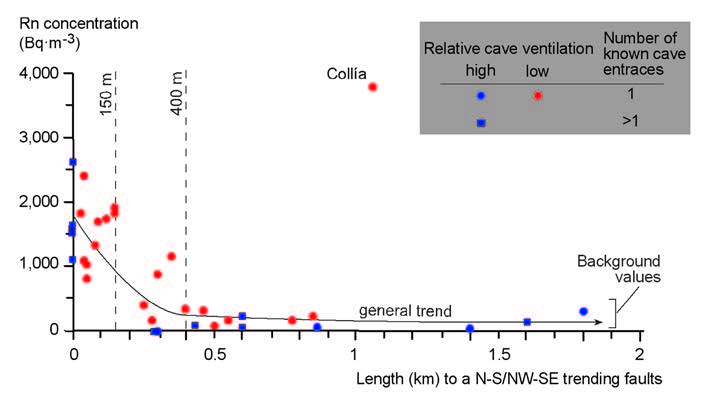Radon concentration in caves as a proxy for tectonic activity in The Cantabrian Mountains (Spain)
DOI:
https://doi.org/10.3986/ac.v50i1.7795Keywords:
active fault, geoindicator, karst cave, radonAbstract
Radon (Rn) constitutes a good geochemical tracer for neotectonic activity in faults since associated fracturing near the surface favours fluid escape to the atmosphere. In this contribution, we measured the Rn concentration in the air inside karst caves to constraints the recent fault activity in the Cantabrian Mountains (N Spain). Rock formations exhumed during the uplifting of the Cantabrian Mountains record a long history of fracturing, which has the potential to connect deeper sources of Rn with the surface. In this regional study, we correlate Rn measurements with cave survey data and geological structures using a Geographic Information Systems. Thirty-four Rn average concentration was recorded by CR-39 detectors during 8 integrated months. The method is applied to the central part of the Cantabrian Mountains that is built on sedimentary and low-grade metamorphic rocks relatively poor in U. Dominant tectonic structures and Rn concentration are examined in 28 cavities. The concentration of Rn values is higher than 0.5 kBq·m-3 in caves developed preferably following fractures with the direction N30oW, being the concentration greater than 0.8 kBq·m-3 in cavities located less than 200±50 m from subvertical faults with such orientation. Rn anomalies point to relative high connectivity along subvertical fault zones NW-trending, preserving fracture connectivity in the most recent structures in the Cantabrian Mountains. Finally, in the study area there is a low but significant radioactive hazard which is associated to fault zones in a fractured rock massif. It contrasts with other active tectonic settings where the radioactive hazard may come from fault movements.
Downloads

Downloads
Published
How to Cite
Issue
Section
License

This work is licensed under a Creative Commons Attribution-NonCommercial-NoDerivatives 4.0 International License.
Authors guarantee that the work is their own original creation and does not infringe any statutory or common-law copyright or any proprietary right of any third party. In case of claims by third parties, authors commit their self to defend the interests of the publisher, and shall cover any potential costs.
More in: Submission chapter




